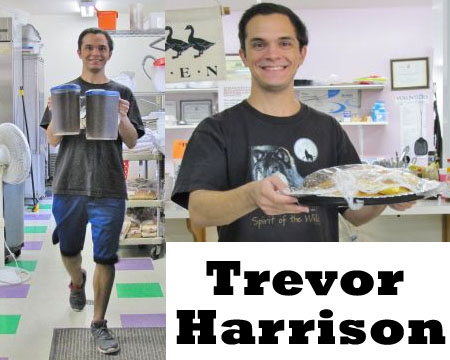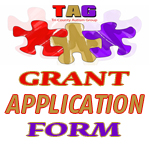14th Annual "Ride For Autism" Sunday October 10th 2021
Tri-County Autism Group, TAG, is excited to announce their
14th Annual Ride for Autism, on Sunday October 10th, 2021. Registration for the ride will be from 9-11am, at El Torero Restaurant located at 2869 W.Highway 12, in Burson Ca. The pack ride will commence immediately following sign ups, touring through Calaveras, Amador and Tuolumne counties. The ride concludes at New Hogan Lake Observation Point Valley Springs, California 95252
Cost for the ride is a $20.00 donation for single riders and $35.00 for double riders. A free ride pin is included for the first 100 riders.
Due to Covid we will not be offering lunch or a raffle this year. Click below to view the flyer.

All proceeds from this event will help raise money to benefit local families whose children have been diagnosed with Autism, by providing funding for scholarships, services, therapies, education and information associated with Autism Spectrum Disorders. If you are interested in providing raffle prize donations, please contact Geoff Cooper at (209) 256-2476 or email [email protected].
Tri-County Autism Group is a non-profit, 501-C3 organization formed 8 years ago to assist families in Amador, Calaveras and Tuolomne counties, for their Autism needs. Monthly meetings are held every 3rd Tuesday at El Terero. Meetings begin at 7pm and are open to the public. New members are welcome and encouraged.
Cost for the ride is a $20.00 donation for single riders and $35.00 for double riders. A free ride pin is included for the first 100 riders.
Due to Covid we will not be offering lunch or a raffle this year. Click below to view the flyer.

All proceeds from this event will help raise money to benefit local families whose children have been diagnosed with Autism, by providing funding for scholarships, services, therapies, education and information associated with Autism Spectrum Disorders. If you are interested in providing raffle prize donations, please contact Geoff Cooper at (209) 256-2476 or email [email protected].
Tri-County Autism Group is a non-profit, 501-C3 organization formed 8 years ago to assist families in Amador, Calaveras and Tuolomne counties, for their Autism needs. Monthly meetings are held every 3rd Tuesday at El Terero. Meetings begin at 7pm and are open to the public. New members are welcome and encouraged.
Job Program Empowers Young Adults With Disabilities

Trevor Harrison, 20, of Valley Springs has held a part-time job since he was in the ninth grade. “I don’t want to be lazy and slack off,” he said. “I want to work.” He has logged hours at various jobs around Calaveras County. His latest job is in the kitchen at the Calaveras Senior Center.
Harrison, who was diagnosed with autism when he was about 5 years old, is a participant in the WorkAbility Program of the Calaveras County Special Education Local Plan Area. He is proud of his involvement. He said the doctor who originally diagnosed him told his family he wouldn’t be very communicative. “We proved them wrong,” he said. “… You may find it within if you’re given the chance to unlock it.”
WorkAbility, which has been in operation since the mid-1980s, is funded by a grant and the California Department of Education’s Special Education Division. Participating schools include Calaveras High School, Bret Harte High School, Calaveras River Academy, Mountain Oaks School and Sierra Hills Education Center. The organization matches students with businesses, and the program follows up with students for two years to ensure they transition to employment and post-secondary education. Harrison is part of the post-grad transition program. There are 16 young adults, ages 18 to 22, in this program. The recent grads come to the center from about 8:30 a.m. to 3 p.m. every weekday to improve upon their job and social skills. Harrison has now spent six years with WorkAbility. “It’s been a great work experience,” he said. “It will help me to get a job when I’m on my own. ”His favorite part? “Getting paid and being able to work,” he said. “I would like nothing more than to not sit at home all day.” For each jobsite experience, the young adults work about four hours for 10 weeks. This way, they can test out a variety of potential long-term jobs. While kids are still in high school, they learn at the school sites about job training and social practices – “what it’s like to transition into the real world,” said Jamie Lane, the WorkAbility coordinator at Calaveras High School. “I stay in contact with the employers during students’ time working,” she said. “I notify parents and teachers, so everyone can give positive reinforcement to students. … They are very excited and feel very productive.” She said the students in WorkAbility are encouraged to narrow down their goals and research possible careers and education needs. “I think it’s a great experience for them,” Lane said. “The work experience element is only a component. They are also exposed to vocation awareness.” Kristen Phillips, a transition teacher who works with recent graduates like Harrison, agreed the program serves as a valuable resource. “It’s so important,” Phillips said. “Our economy in general, there aren’t a lot of jobs out there. Folks with disabilities are often the ones who struggle finding jobs and keeping jobs.” She said the program provides entry level skills – and then some. “… It doesn’t just involve workplace skills like cleaning floors, filling out a time sheet,” she said. “It encompasses so much of what we try to teach our students here on a daily basis, but they are out in a real world situation. … I’ve had a couple students who have transitioned into employment. It’s just a stepping stone into a broader field.” She said the deal is not bad for employers, either. “They are essentially getting free work,” she said, since the students’ payment is funded through the WorkAbility Program. “It’s like having a volunteer there. They’re not required to pay insurance or wages. The employers’ responsibility is just to treat the student like any other employee.” Audrey Blake, the lead chef in the Phoenix Kitchen at the Calaveras Senior Center, said she has worked with kids in WorkAbility for a couple of years now. “It’s interesting because you get to meet people you normally wouldn’t meet,” she said. “And extra pairs of hands are always good.” She said it is a learning experience for all involved, herself included. She said she also hopes it is enjoyable. “In this business, we want it to be fun,” she added. “Otherwise, it’s just a lot of potato peeling.” WorkAbility is seeking more businesses to place its students. “Placements are limited in Calaveras County, so every placement is greatly appreciated,” Lane said. “The students love WorkAbility and are excited to get out in the working world early to gain necessary skills for employment after they graduate.”










